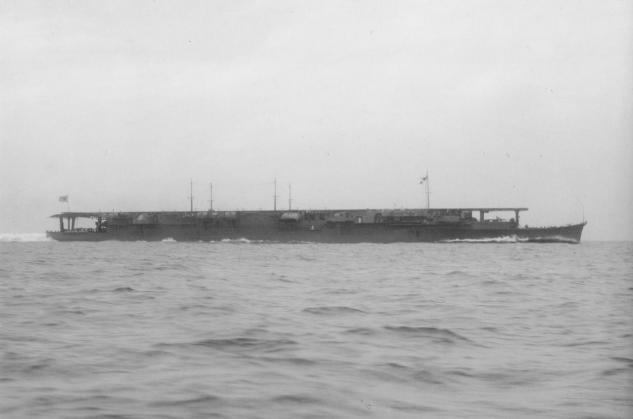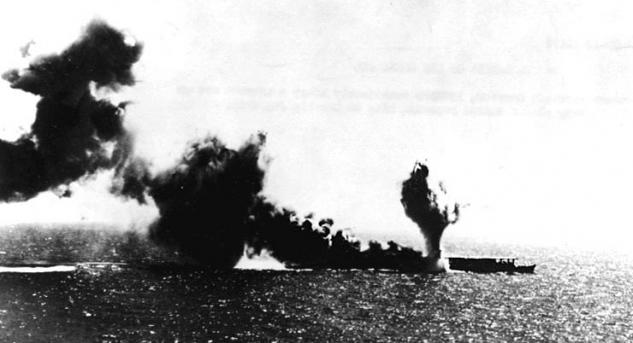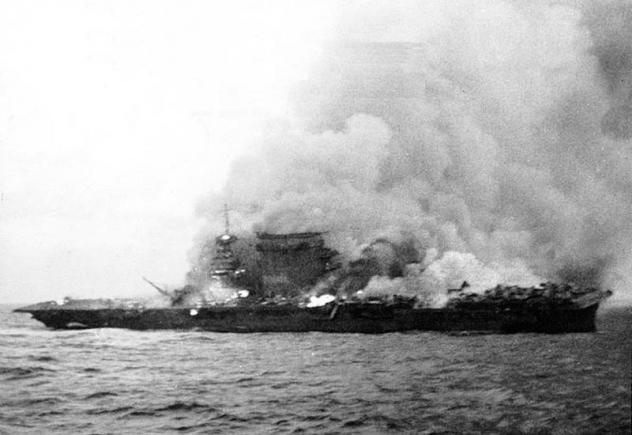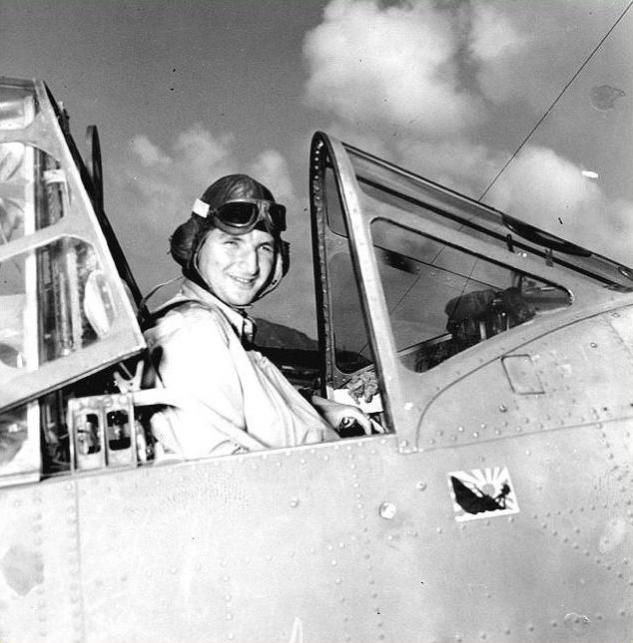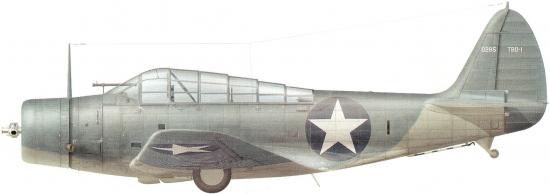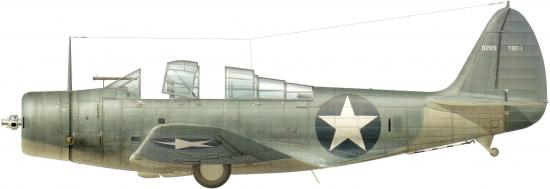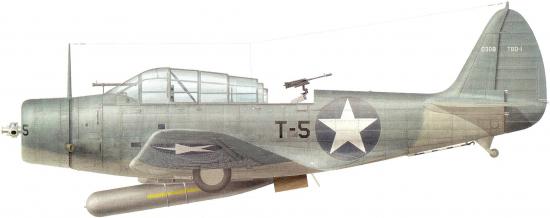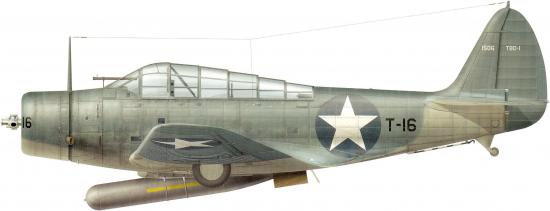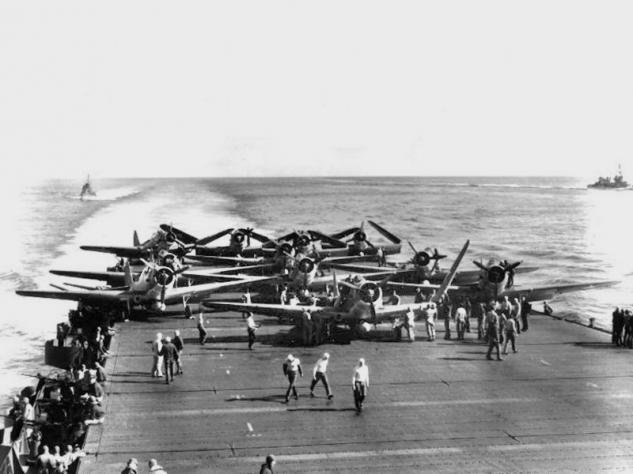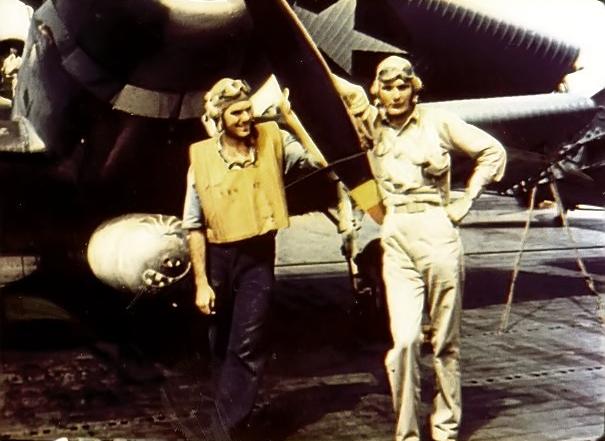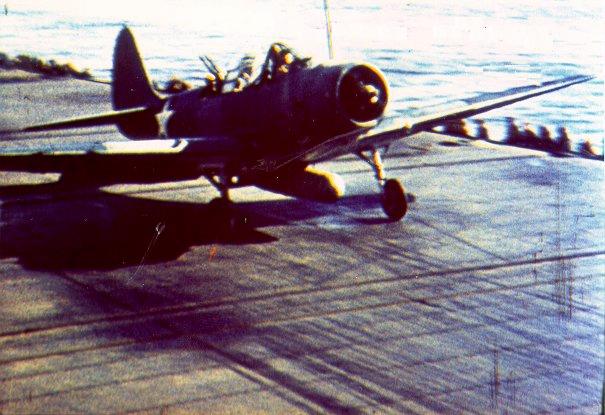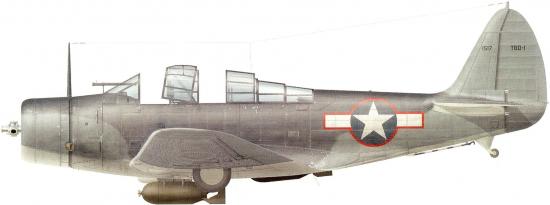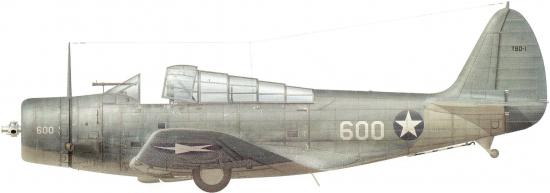Douglas TBD Devastator
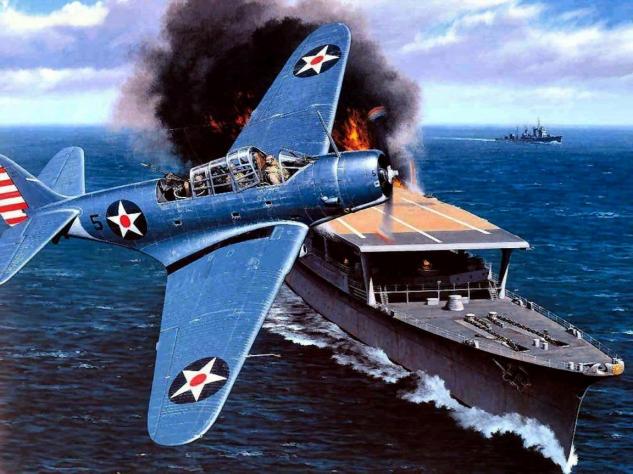
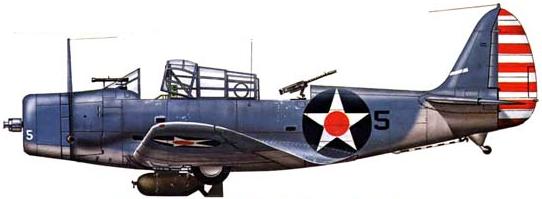
Douglas TBD-1 - Squadron VT-6 - CV-6 USS Enterprise, 1942
artiste inconnu - artist unknown - source : http://wp.scn.ru
Le Douglas TBD "Devastator" était un bombardier torpilleur américain. Premier avion à aile basse et entièrement métallique de la Navy, il était moderne lors de son entrée en service en Novembre 1937. Il devint rapidement démodé au début de la guerre du Pacifique : la bataille de Midway lui fut fatale et marqua la fin de sa carrière opérationnelle. La très mauvaise fiabilité de ses torpilles Mk XIII fut son principal handicap.
The Douglas TBD "Devastator" was an American torpedo bomber. First entirely metallic plane with low wing in the Navy, it was modern when entering in service in November 1937. It quickly became obsolete at the beginning of the Pacific war : the battle of Midway was fatal and marked the end of its operational career.The very bad reliability of its torpedoes Mk XIII was its main handicap.
Développement - Development
Le 30 juin 1934, l'US Navy émet la demande SD-119-3 pour un appareil destiné à remplacer le Great-Lake TG-2 dans les unités de torpillage embarquées. Trois constructeurs répondent : Great Lake avec un biplan (projet XTBG-1), Hall avec un bimoteur (à flotteurs !) (projet XPTBH-2) et Douglas avec un monomoteur moderne (projet XBTD-1 renommé XTBD-1). La Marine passe commande d'un prototype à Great Lakes (BuNu 9723) et à Douglas (BuNu 9720). Le XTBD-1 effectue un premier vol à Santa Monica le 15 avril 1935 (moteur Pratt & Whitney R-1830-60 de 800 cv).
On June 30th, 1934, the US Navy launch the tender SD-119-3 for an aircraft to replace the Great-Lake TG-2 in the embarked torpedo units. Three manufacturers answer : Great Lake with a biplane (project XTBG-1), Hall with a twin-engine (with floats!) (project XPTBH-2) and Douglas with a modern single-engined aircraft (project XBTD-1 later named XTBD-1). The Navy places an order for a prototype to Great Lakes (BuNu 9723) and Douglas (BuNu 9720). The XTBD-1 makes a first flight at Santa Monica on April 15th, 1935 (engine Pratt & Whitney R-1830-60 of 800 hp).
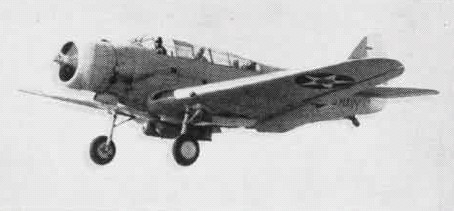 Douglas XTBD-1 "Devastator" (BuNo 9720)
Douglas XTBD-1 "Devastator" (BuNo 9720)
Prototype qui vola la première fois le 15 avril 1935.
Prototype which first flew on 15 April, 1935.
© US Navy (domaine public - public domain)
Du 13 au 17 juin, essais de vol nocturne sur la base de Norfolk. De fin juillet à septembre, on procède aux essais de bombardement : bien que le bombardier doit ramper sous les pieds du pilote pour atteindre le viseur Norden Mk.XV mod. 3, les essais se passent bien. Viennent ensuite les essais de torpillage à Norfolk qui se déroulent sans problème particuliers (torpille Mk.8). Enfin des essais de décollage et d'appontage sont effectués sur l'USS Lexington en décembre. Le nouvel avion donne satisfaction et après quelques petites modifications, la Marine passe commande (n° 46330) de 114 avions TBD-1 (BuNo 0268 à 0381) le 3 février 1936.
From June 13th to 17th, night flight trials at Norfolk base. From the end of July to September, bombing tests are performed : although the bomber must crawl under the feet of the pilot to reach the Norden sight (Mk.XV Mod. 3), the tests are positive. Then come the torpedoing tests at Norfolk base which are performed without particular problems (Mk.8 torpedo). Finally tests of takeoff and landing are done on USS Lexington in December. The new aircraft gives satisfaction and after some minor modifications, the Navy places order (n° 46330) for 114 TBD-1 units (BuNo 0268 to 0381) on February 3rd, 1936.
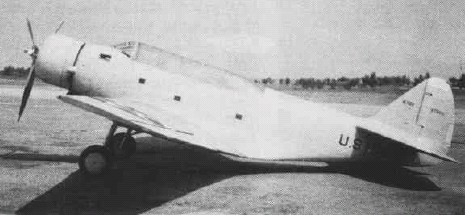 Douglas XTBD-1 (BuNo 9720).
Douglas XTBD-1 (BuNo 9720).
A noter la verrière plus plate que sur les modèles de production TBD-1.
Note the flatter canopy compared to the production TBD-1
© Naval Historical Center - (US Navy) - www.history.navy.mil
Le premier des 114 exemplaires de série (BuNu 0268) sort d'usine le 3 mai 1937. Il est accepté par la marine le 3 août 1937. Il effectue ensuite des essais d'armement et de matériel. Le 14 août 1939, il est équipé d'une paire de flotteurs Edo et devient TBD-1A au sein du Squadron VX-2D1. Mais il restera au stade experimental et sera ferraillé le 23 septembre 1943.
The first of the 114 series units (BuNu 0268) goes out of the factory on May 3rd, 1937. It is accepted by the Navy on August 3rd, 1937. It goes on then with tests of armament and equipment. On ugust 14th, 1939, it is equipped with a pair of Edo floats and becomes TBD-1A within Squadron VX-2D1. But it remains at the experimental stage and is destroyed on September 23rd, 1943.
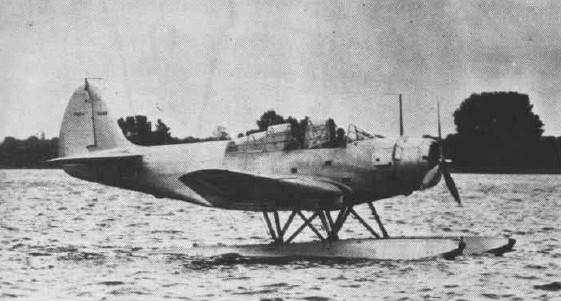 Douglas TBD-1A, 1939.
Douglas TBD-1A, 1939.
© Naval Historical Center - (US Navy) - www.history.navy.mil
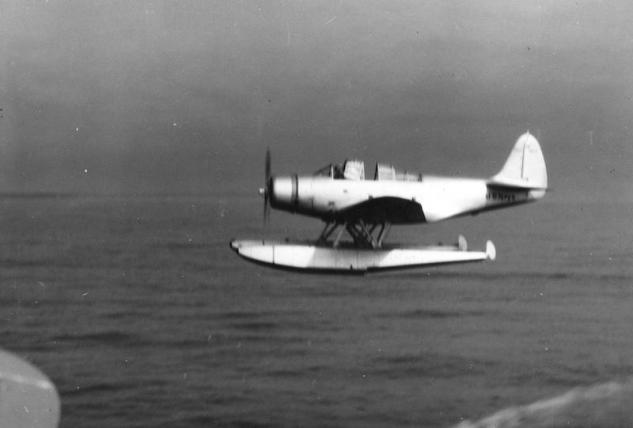 Douglas TBD-1A, 1939.
Douglas TBD-1A, 1939.
En vol bas pendant des test de torpillage à la Station de Torpillage de newport, Rhode Island, le 10 octobre 1941.
In low-level flight during torpedo drop tests at the Newport Torpedo Station, Rhode Island, 10 October 1941.
© US National Archives - www.archives.gov (public domain)
En 1940, des expériences de camouflages ont lieu, proposées par un certain Mc Clelland Barclay: 2 TBD-1 du VT-3 (en février) puis 3 du VT-5 (au printemps) sont peints avec des bandes spécifiques et sans marques de nationalité. Ces essais seront peu concluants.
In 1940, experiments of camouflages are done, suggested by Mr Mc Clelland Barclay : 2 TBD-1 of the VT-3 (in February) and then 3 of the VT-5 (in spring) are painted with specific bands and without marks of nationality. These tests were not very conclusive.
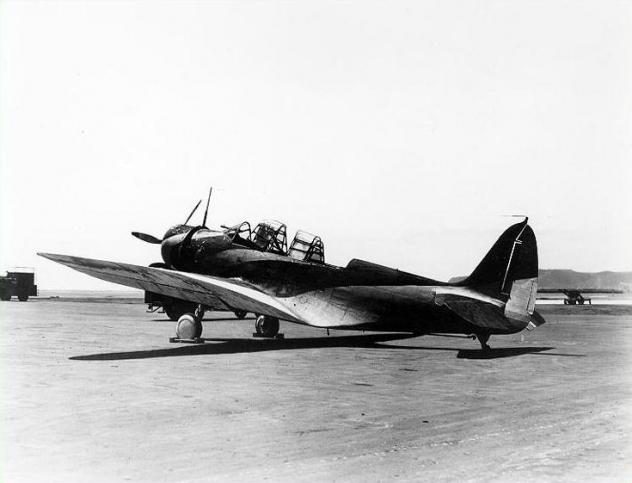
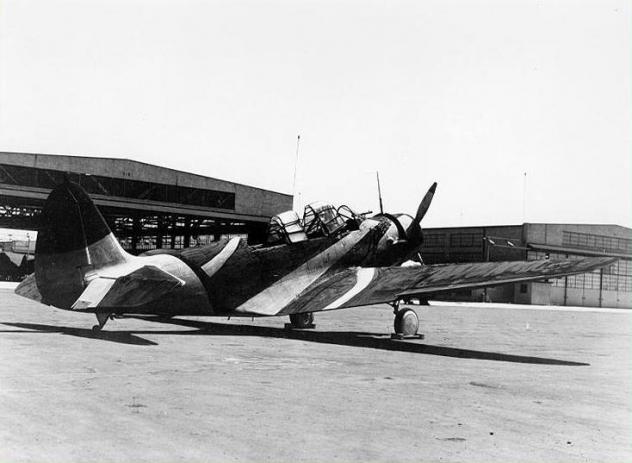 Douglas TBD-1 BuNo 0320 - Squadron VT-3 - NAS North Island (San Diego) - 22/08/1940
Douglas TBD-1 BuNo 0320 - Squadron VT-3 - NAS North Island (San Diego) - 22/08/1940
Cet avion (camouglage n°7) sera perdu lors de la Bataille de la mer de Corail au sein du VT-2 (mai 1942).
This aircraft (camouflage design n°7) was lost during the Battle of the Coral Sea while serving in VT-2 (May 1942).
© Naval Historical Center - (US Navy) - www.history.navy.mil

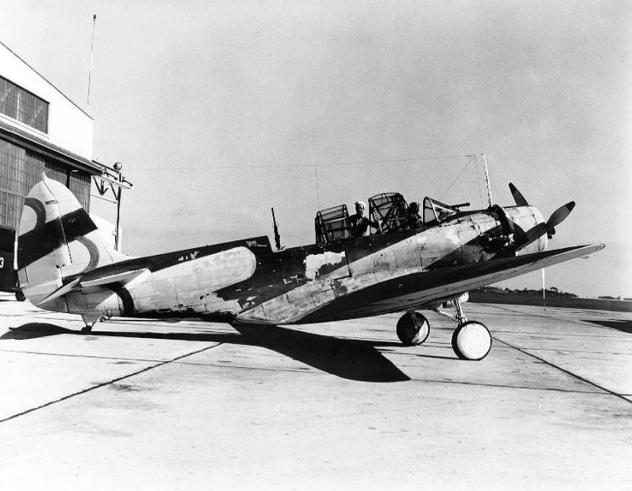
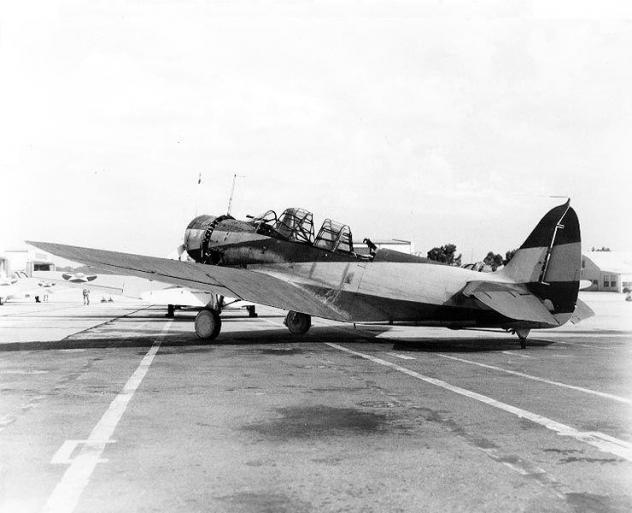 Douglas TBD-1 BuNo 0339 - Squadron VT-3 - NAS North Island (San Diego) - 22/08/1940
Douglas TBD-1 BuNo 0339 - Squadron VT-3 - NAS North Island (San Diego) - 22/08/1940
Cet avion (camouglage n°8) sera également perdu lors de la Bataille de la mer de Corail au sein du VT-2 (mai 1942).
This aircraft (camouflage design n°7) was also lost during the Battle of the Coral Sea while serving in VT-2 (May 1942).
© Naval Historical Center - (US Navy) - www.history.navy.mil
Les versions - Variants
XTBD-1
1 prototype construit - 1 prototype built
TBD-1
129 modèles construits - 129 models built
TBD-1
1 TBD-1 transformé avec flotteurs - 1 TBD-1 modified with floats
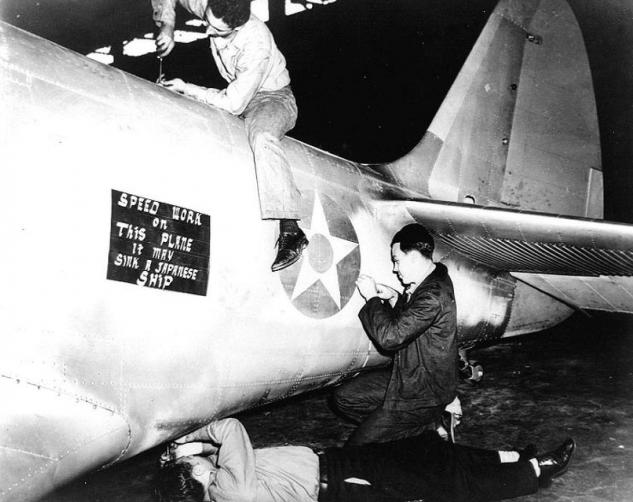 Douglas TBD-1 - Norfolk, 1941
Douglas TBD-1 - Norfolk, 1941
© US Navy (domaine public - public domain)

Fiche technique - Technical data
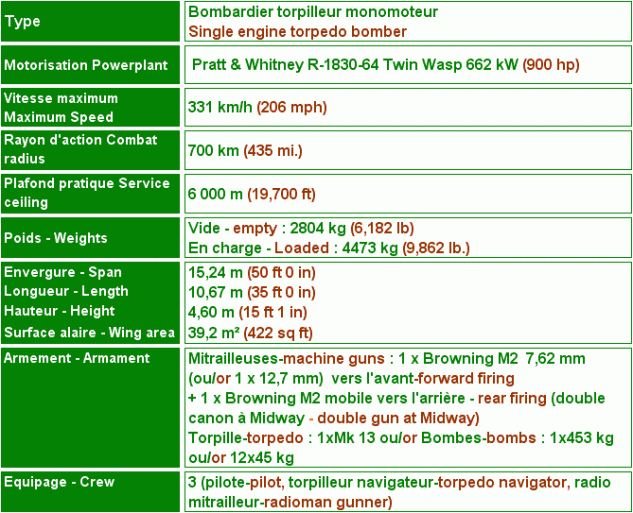
Les TBD-1 en service - TBD-1 in service
L'arrivée du USS Yorktown (CV-5) et USS Enterprise (CV-6) amène la Marine Américaine à réorganiser l'aviation embarquée le 1er juillet 1937. Chaque groupe aérien embarqué doit en principe avoir un squadron de chasse, un squadron de bombardiers en piqué, un squadron de reconnaissance("scout"), doté de bombardiers en piqué pour la reconnaissance offensive et un squadron de bombardiers torpilleurs (VT). Le VT-1 devient VT-2 à bord du USS Lexington, le VT-2B devient VT-3 sur le USS Saratoga. Les VT-5 (USS Yorktown) et VT-6 (USS Enterprise) sont créés.
The arrival of USS Yorktown (CV-5) and USS Enterprise (CV-6) leads the American Navy to reorganize embarked aviation on July 1st, 1937. Each embarked aerial group has in theory a fighter squadron, a diving bomber squadron, a recognition ("scout") squadron, equipped with diving bombers for the offensive recognition and a torpedo bomber squadron (VT). The VT-1 becomes VT-2 on board USS Lexington, the VT-2B becomes VT-3 on USS Saratoga. The VT-5 (USS Yorktown) and VT-6 (USS Enterprise) are created.
Les marquages d'avant guerre - Pre-war markings
• L'identification des porte-avions - The aircraft-carriers identification.
La couleur de l'enpennage du Devastator permet l'identification du porte avions :
The color of the Devastator's tail allows the identification of the aircraft-carrier :
- Jaune - Yellow : Lexington (CV-2)
- Blanc - White : Saratoga (CV-3)
- Vert - Green : Ranger (CV-4)
- Rouge - Red : Yorktown (CV-5)
- Bleu - Blue : Enterprise (CV-6)
- Noir - Black : Wasp (CV-7)
- pas de couleur - no color : Hornet (CV-8).
Le Hornet est entré en service peu avant guerre.
The Hornet was in service shortly before the war.
• L'identification des unités - The units identification.
Chaque Squadron ("VT") comprends en théorie 18 avions en 6 sections de 3 : chaque section a sa couleur (anneau ou demi-anneau sur le capot moteur, bandes sur les ailes et pour certains sur le fuselage).
Each Squadron ("VT") has in theory 18 aircrafts in 6 sections of 3 : each section has its color (ring or half-ring on the engine hood, stripes on the wings and sometimes on the fuselage).
- Rouge - Red : 1° section (avions/aircrafts "T-1" à/to "T-3")
- Blanc - White : 2° section (avions/aircrafts "T-4" à/to "T-6")
- Bleu - Blue : 3° section (avions/aircrafts "T-7" à/to "T-9")
- Noir - Black : 4° section (avions/aircrafts "T-10" à/to "T-12")
- Vert - Green : 5° section (avions/aircrafts "T-13" à/to "T-15")
- Jaune - Yellow : 6° section (avions/aircrafts "T-16" à/to "T-18")

• L'identification des avions - The aircrafts identification.
3 avions par section : le premier avion a un anneau complet sur le capot moteur, des bandes diagonales sur les ailes et une bande de fuselage. Le second avion a un demi anneau supérieur sur le capot et des bandes diagonales sur les ailes et le troisième avion comme le second mais avec un demi-anneau inférieur sur le capot moteur. Le numéro d'ordre de chaque avion est également inscrit sur l'aile entre la bande diagonale et le fuselage (voir ci-dessous).
3 aircrafts per section: the first one has a full ring on the engine hood, diagonal stripes on the wings and one stripe on the fuselage. The second aircraft has an upper half ring on the hood and diagonal stripes on the wings and the third aircraft like the second one but with a lower half ring on the engine hood. The sequence number of each aircraft is also indicated on the wing between the diagonal stripe and the fuselage (see below).
Chaque Squadron a son insigne sur la partie avant du fuselage sous le poste de pilotage. "TBD-1" et le BuNo sont inscrits sur l'empennage (en noir ou en blanc). Les cocardes sont sur et sous les ailes. Les surfaces supérieures des ailes sont jaune ("chrome yellow") et le reste de l'avion est peint en aluminium.
Each Squadron has its unit marking on the front part of the fuselage under the cockpit. "TBD-1" and the BuNo are indicated on the tail (in black or white). The american stars are above and under the wings. The upper surfaces of the wings are yellow ("chrome yellow") and the rest of the plane is aluminum painted.
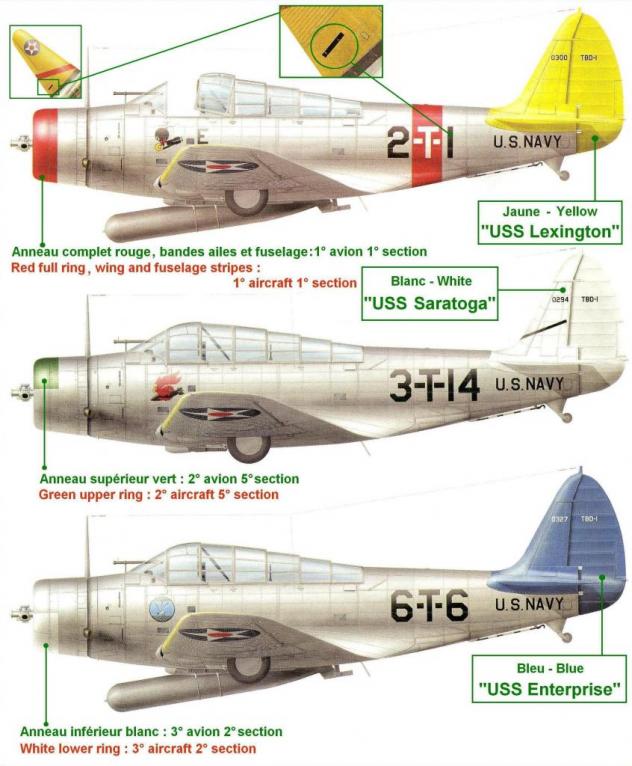
 Le VT-3, première unité équipée
Le VT-3, première unité équipée
The VT-3, first unit to be equipped
Fin septembre 1937, les hommes du VT-3, commandés par le Lieutenant Commander M.E. Crist, prennent progressivement livraison des 21 premiers Devastator sur la NAS (Naval Air Station) de North Island en Californie. Le premier (BuNo 0270 "3-T-8") est livré le 5 octobre 1937 suivi rapidement du BuNo 0271 ("3-T-2") puis jusqu'en décembre des BuNo 0273 à BuNo 0291. Le 26 janvier 1938, le "3-T-18" a l'honneur d'effectuer le 38 000ème appontage sur le USS Saratoga. Pendant cette période d'avant guerre, les pilotes s'entraînent et effectuent notamment une simulation d'attaque sur Pearl Harbor le 15 mars 1938 (!!).
Late September, 1937, the pilots of the VT-3, leaded by Lieutenant Commander M.E. Crist, gradually take delivery of the first 21 Devastator on the NAS (Naval Air Station) of North Island in California. The first one (BuNo 0270 "3-T-8") is delivered on October 5th, 1937 quickly followed by BuNo 0271 ("3-T-2") and then BuNo 0273 to BuNo 0291 until December. On January 26th, 1938, the "3-T-18" has the honor to make the 38,000th landing on USS Saratoga. During this prewar period, the pilots trains themselves and make in particular a simulation of attack on Pearl Harbor on March 15th, 1938 (!!).
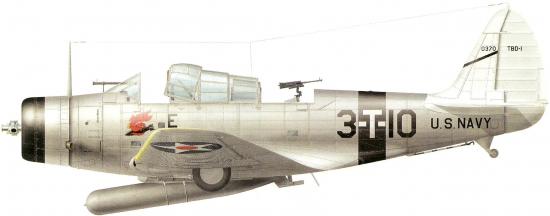 Douglas TBD-1 BuNo 0370 - Squadron VT-3 - USS Saratoga
Douglas TBD-1 BuNo 0370 - Squadron VT-3 - USS Saratoga
Chef de la 4° Section - Chief of 4th Section
© Dekker Art Work - Thierry Dekker (http://dekkerartwork.over-blog.com/)
Trois Devastator (les "3-T-13", "3-T-14" et "3-T-15") participent au tournage du film "Dive Bomber" au printemps 1941. Les BuNo 0288, 0270, 0292, 0373, 0323 et 0371 seront détruits par accident avant le 7 décembre 1941 (2 équipages complets et un autre membre d'équipage tués).
Three Devastator ("3-T-13", "3-T-14" and "3-T-15") take part in the turning of the movie "Dive Bomber" in Spring 1941. The BuNo 0288, 0270, 0292, 0373, 0323 and 0371 were destroyed by accident before December 7th, 1941 (2 complete crews and another team member killed).
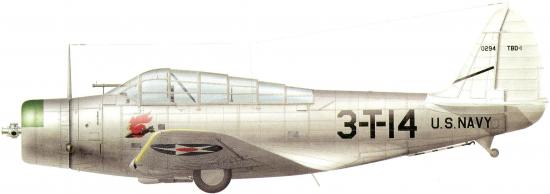 Douglas TBD-1 BuNo 0294 - USS Saratoga - NAS North Island (San Diego)
Douglas TBD-1 BuNo 0294 - USS Saratoga - NAS North Island (San Diego)
2nd avion de la 5e section du Squadron VT-3, janvier 1938.
2nd aircraft of 5th section of Squadron VT-3, January 1938.
© Dekker Art Work - Thierry Dekker (http://dekkerartwork.over-blog.com/)
Le VT-2 sur le Lexington - The VT-2 aboard the lexington
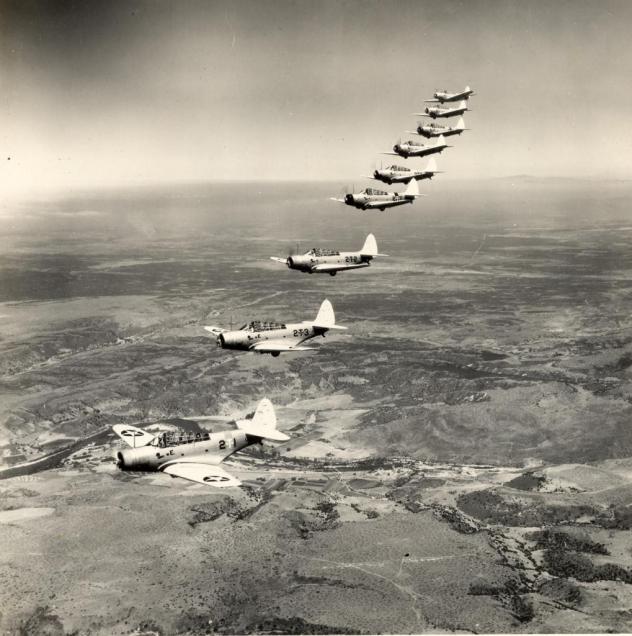 9 Douglas TBD-1 - Squadron VT-2 - 06/01/1941
9 Douglas TBD-1 - Squadron VT-2 - 06/01/1941
© US Navy (domaine public - public domain)
De décembre 1937 à février 1938, le Lt Cdr W. Sinton et ses pilotes du VT-2 prennent possesion de 21 Devastator à North Island. Ils suivent également un entraînement et simule avec le VT-3 l'attaque sur Pearl Harbor en Mars 1938. 5 appareils seront perdus du 9 août 1938 au 29 avril 1941 : les BuNo 0309, 0301, 0287, 0314, 0377 et 0280.
From December 1937 to February 1938, Lt Cdr W. Sinton and his pilots of the VT-2 take possession of 21 Devastator at North Island. They also train themselves and simulate with the VT-3 the attack on Pearl Harbor in March 1938. 5 aircrafts are lost from August 9th, 1938 to April 29th, 1941: BuNo 0309, 0301, 0287, 0314, 0377 and 0280.
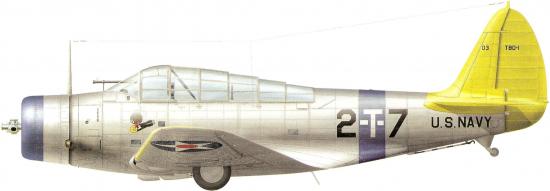
Douglas TBD-1 - Squadron VT-2 - USS Lexington, 1938
Chef de la 3° Section - Chief of 3rd Section
© Dekker Art Work - Thierry Dekker (http://dekkerartwork.over-blog.com/)
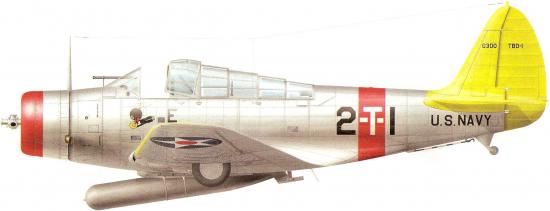
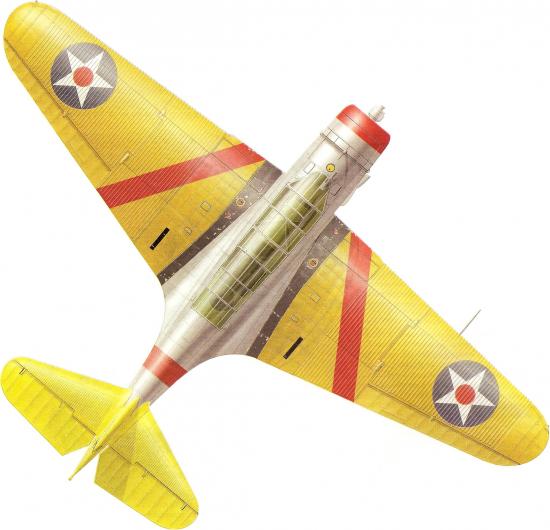
Douglas TBD-1 BuNo 0300 - Commander Squadron VT-2 - USS Lexington, 1938
Chef de la 1° Section - Chief of 1st Section
© Dekker Art Work - Thierry Dekker (http://dekkerartwork.over-blog.com/)
VT-5 & VT-6
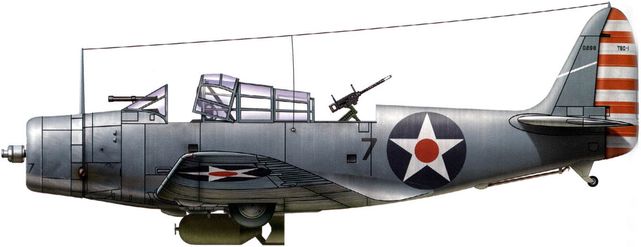
Douglas TBD-1 (BuNo 0298 ?) - Squadron VT-5 - USS Yorktown
Le Lt. Harlan T. 'Dub' Johnson pilota cet avion lors d'un raid sur les Iles Marshall le 1er février 1942
Lt. Harlan T. 'Dub' Johnson flew this aircraft in a raid on the Marshall Islands on February 1st, 1942
© Andrew Probert - http://probertdesigns.com
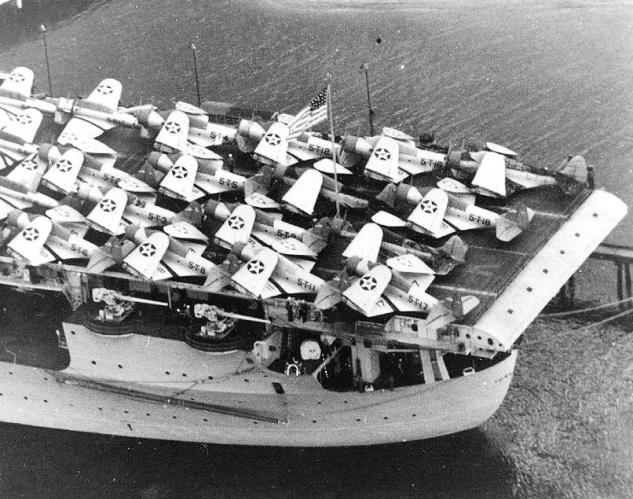 Douglas TBD-1 - Squadron VT-5 - USS Yorktown - NAS North Island (San Diego)
Douglas TBD-1 - Squadron VT-5 - USS Yorktown - NAS North Island (San Diego)
Juin 1940 - June 1940
© Naval Historical Center - (US Navy) - www.history.navy.mil
Les Squadrons VT-5 et VT-6 sont créés à Norfolk (Virginie) le 1er juillet 1937 pour les porte-avions Yorktown et Enterprise. Les premiers Devastator sont réceptionnés en février 1938. Le VT-5 (Lt Cdr J.E. Craig) perçoit neuf exemplaires (BuNo 0313 à 0321) puis le VT-6 (Lt Cdr W.B. Ault) neuf également (BuNo 0322 à 0330). Les neuf suivant iront au VT-5 (BuNo 0331 à 0339) et les neuf derniers (BuNo 0340 à 0348) au VT-6 en avril 1938.
The Squadrons VT-5 and VT-6 are created in Norfolk (Virginia) on July 1st, 1937 for the aircraft carriers Yorktown and Enterprise. First Devastators are delivered in February 1938. The VT-5 (Lt Cdr J.E. Craig) gets nine aircrafts (BuNo 0313 to 0321) and then the VT-6 (Lt Cdr W.B. Ault) nine also (BuNo 0322 to 0330). The nine following will go to the VT-5 (BuNo 0331 to 0339) and the nine last (BuNo 0340 to 0348) to the VT-6 in April 1938.
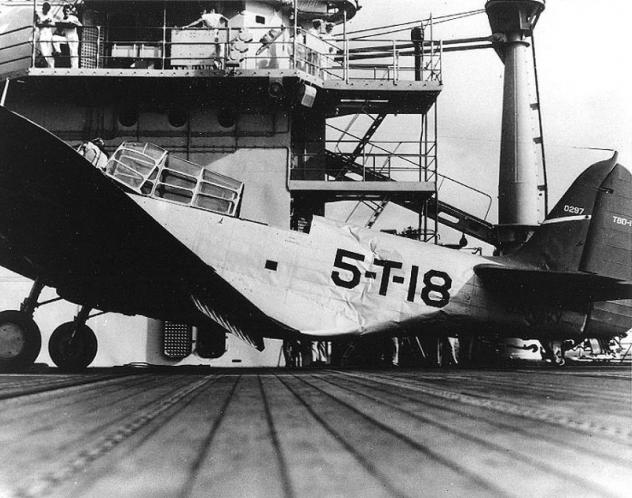 Douglas TBD-1 BuNo 0297 - Squadron VT-5 - USS Yorktown - 03/09/1940
Douglas TBD-1 BuNo 0297 - Squadron VT-5 - USS Yorktown - 03/09/1940
Accident à l'atterissage. Cet avion sera plus tard transféré à la VT-8 et perdu à la Bataille de Midway le 4 juin 1942.
Landing accident. This aircraft will be later transferred to VT-8 and lost during the Battle of Midway on June 4th, 1942.
© Naval Historical Center - (courtesy of Thomas E. Doll) - www.history.navy.mil
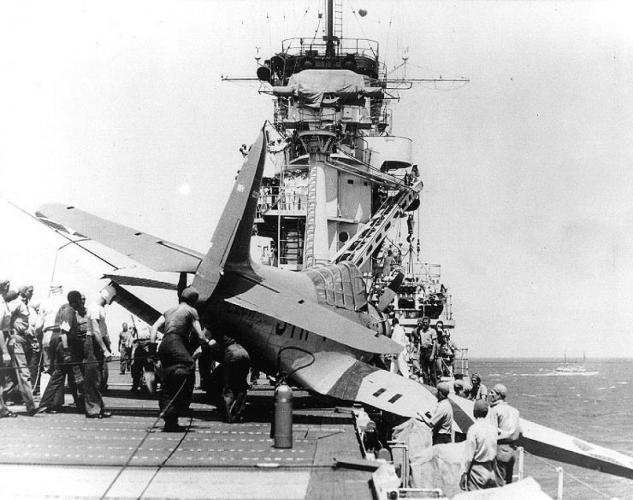 Douglas TBD-1 BuNo 0284 - Squadron VT-5 - USS Yorktown - 03/09/1940
Douglas TBD-1 BuNo 0284 - Squadron VT-5 - USS Yorktown - 03/09/1940
Accident à l'atterissage (pilote : C.M. O'Brien). Cet avion sera plus tard transféré à la VT-8 et perdu à la Bataille de Midway le 4 juin 1942.
Landing accident (pilot : C.M. O'Brien). This aircraft will be later transferred to VT-8 and lost during the Battle of Midway on June 4th, 1942.
© Naval Historical Center - (courtesy of Thomas E. Doll) - www.history.navy.mil
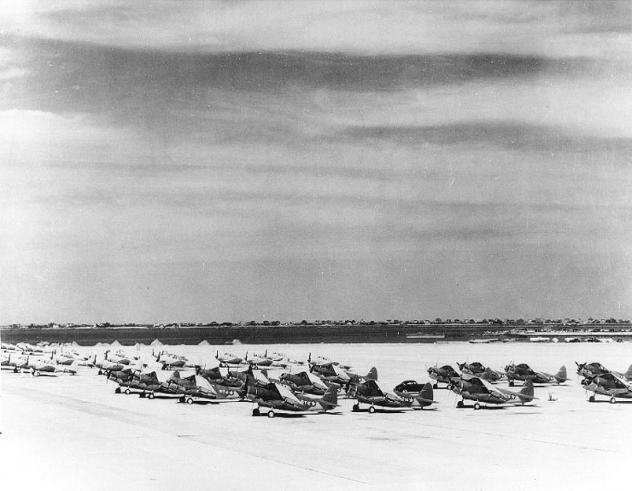 Douglas TBD-1 - Squadron VT-5 - Naval Station Norfolk.
Douglas TBD-1 - Squadron VT-5 - Naval Station Norfolk.
Septembre 1941- September 1941.
© US National Archives - www.archives.gov
D'autres Devastator (BuNo 0349 à 0381) seront livrés au dépôt de la Marine. Neuf d'entre eux (BuNo 0350 à 0358) serviront à l'entraînement à la base navale de Pensacola. Quinze autres Devastator (BuNo 1505 à 1519) seront fabriqués entre juin et octobre 1939 pour compenser les premières pertes.
Other Devastators (BuNo 0349 to 0381) will be delivered to the the Navy. Nine of them (BuNo 0350 to 0358) will be used for training at the Pensacola naval base. Fifteen other Devastator (BuNo 1505 to 1519) will be manufactured between June and October 1939 to compensate the first losses.
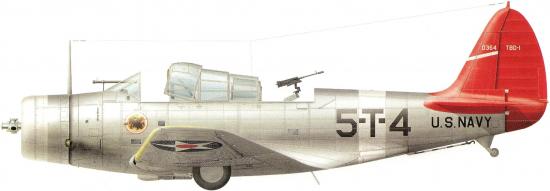
Douglas TBD-1 BuNo 0364 - Squadron VT-5 - USS Yorktown, 1939
Chef de la 2° Section - Chief of 2nd Section
© Dekker Art Work - Thierry Dekker (http://dekkerartwork.over-blog.com/)
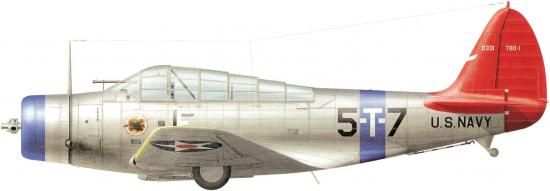
Douglas TBD-1 BuNo 0331 - Squadron VT-5 - USS Yorktown, 1939
Chef de la 3° Section - Chief of 3rd Section
© Dekker Art Work - Thierry Dekker (http://dekkerartwork.over-blog.com/)
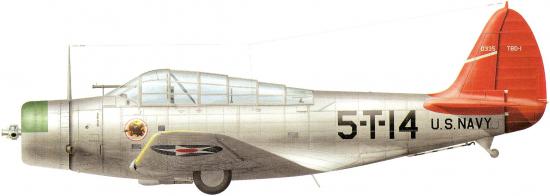
Douglas TBD-1 BuNo 0335 - Squadron VT-5
2nd avion de la 2nd Section - 2nd aircraft of 2nd Section
© Dekker Art Work - Thierry Dekker (http://dekkerartwork.over-blog.com/)
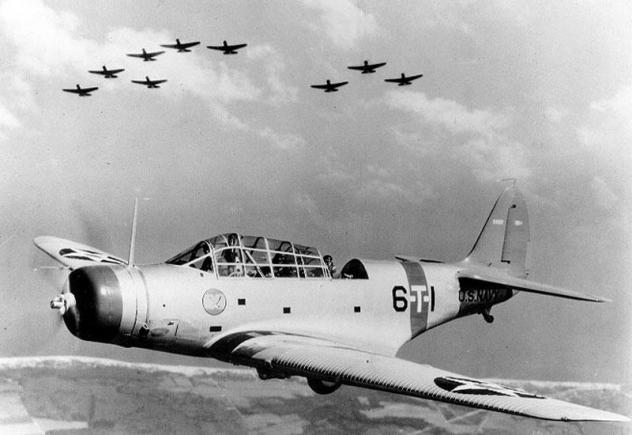 Douglas TBD-1 - Squadron VT-6
Douglas TBD-1 - Squadron VT-6
© Naval Historical Center - (US Navy) - www.history.navy.mil

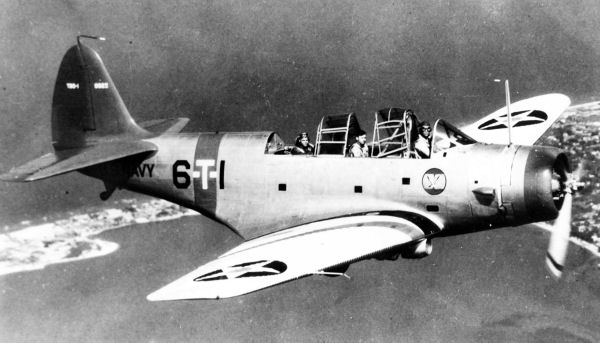 Douglas TBD-1 - Squadron VT-6
Douglas TBD-1 - Squadron VT-6
© Naval Historical Center - (US Navy) - www.history.navy.mil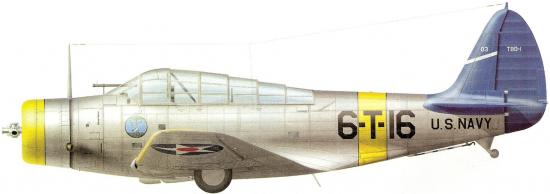
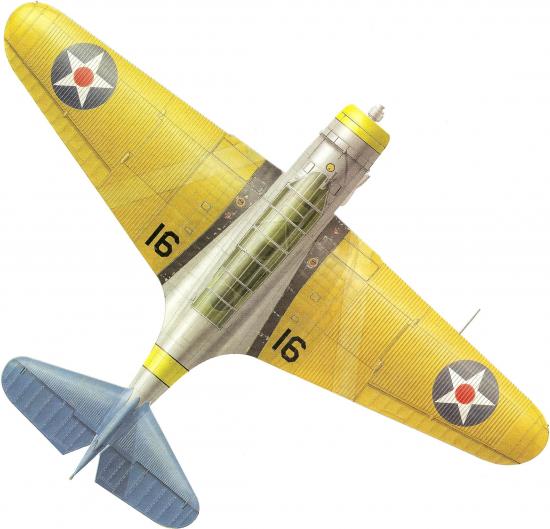 © Dekker Art Work - Thierry Dekker (http://dekkerartwork.over-blog.com/)
© Dekker Art Work - Thierry Dekker (http://dekkerartwork.over-blog.com/)
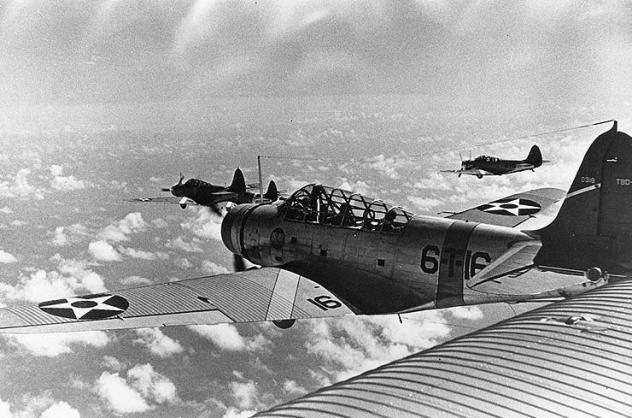 © Naval Historical Center - (US Navy) - www.history.navy.mil
© Naval Historical Center - (US Navy) - www.history.navy.mil
Douglas TBD-1 BuNo 0318 - Squadron VT-6 - USS Enterprise, 1939
Chef de la 6° Section - Chief of 6th Section
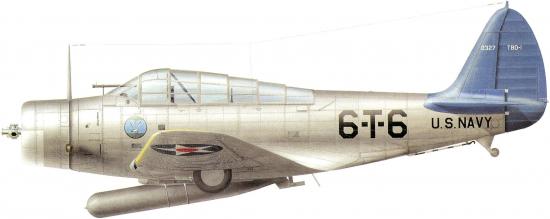
Douglas TBD-1 BuNo 0327 - Squadron VT-6 - NAS Norfolk
Dernier avion de la 2° Section, mai 1938 - Last aircraft of 6th Section, May 1938.
© Dekker Art Work - Thierry Dekker (http://dekkerartwork.over-blog.com/)

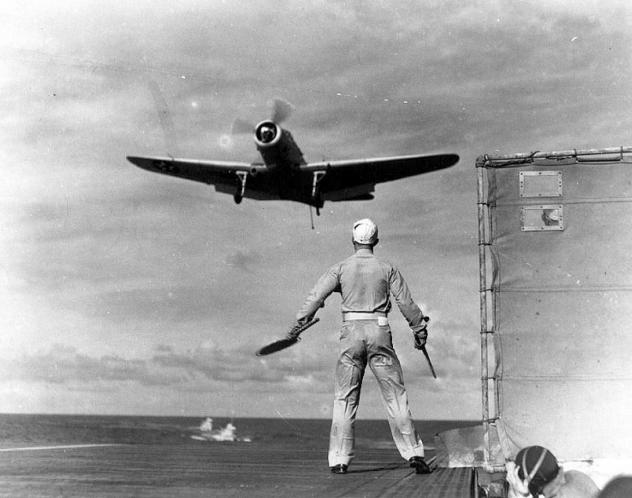 Douglas TBD-1 - Squadron VT-6 - USS Enterprise.
Douglas TBD-1 - Squadron VT-6 - USS Enterprise.
Aux environs de juillet 1941 - About July 1941.
© US National Archives - www.archives.gov
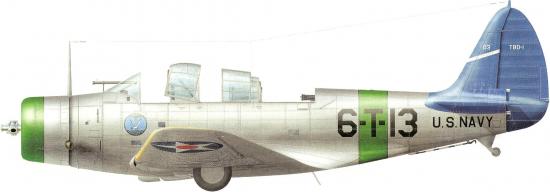
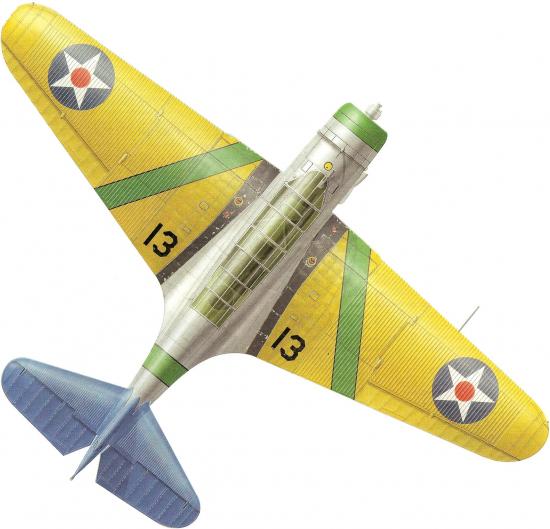
Douglas TBD-1 - Squadron VT-6 - USS Enterprise, 1939
Chef de la 5° Section - Chief of 5th Section
© Dekker Art Work - Thierry Dekker (http://dekkerartwork.over-blog.com/)

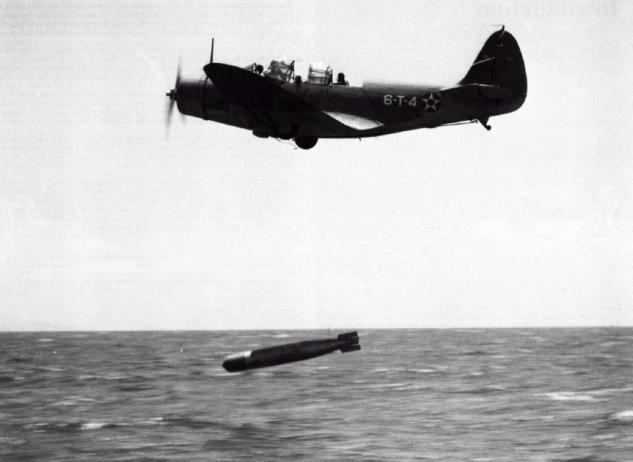 Douglas TBD-1 "6-T-4" Squadron VT-6 - 20/10/1941
Douglas TBD-1 "6-T-4" Squadron VT-6 - 20/10/1941
© Naval Historical Center - (US Navy) - www.history.navy.mil
Les autres unités - Other units
Les USS Wasp (CV-7), USS Hornet (CV-8) et USS Ranger (CV-4) recoivent également des Devastator.
The USS Wasp (CV-7), USS Hornet (CV-8) and USS Ranger (CV-4) also receive Devastators.
• USS WASP
Le groupe aérien du Wasp, créé le 1er juillet 1939, reçoit trois TBD-1 (BuNo 0296, 0356 et 1509) au sein de son Squadron VS-71 équipé de Vought SB2U Vindicator. Les avions s'entraîneront à Guantanamo fin 1940 et début 1941 (entrecoupé d'un séjour à Norfolk). Deux Devastator du VS-71 seront perdus courant 1941.
The aerial group of the Wasp, created on July 1st, 1939, receives three TBD-1 (BuNo 0296, 0356 and 1509) for its Squadron VS-71 already equipped with Vought SB2U Vindicators. The aircrafts train themselves in Guantanamo at the end of 1940 and at the beginning of 1941 (intersected with a stay at Norfolk). Two Devastator of the VS-71 are lost during 1941.
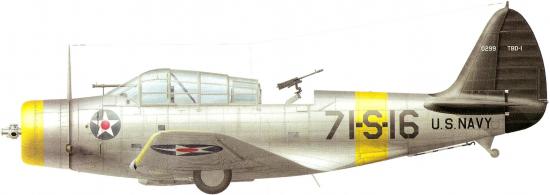 Douglas TBD-1 BuNo 0299 - Squadron VS-71 - USS Wasp, 1941
Douglas TBD-1 BuNo 0299 - Squadron VS-71 - USS Wasp, 1941
Océan Atlantique - Atlantic Ocean
© Dekker Art Work - Thierry Dekker (http://dekkerartwork.over-blog.com/)
Après Pearl Harbor, la Navy réorganise les unités aériennes et le Wasp est doté d'un Squadron d'avions torpilleurs, le VT-7, qui embarque le 7 janvier 1942. Six TBD-1 y seront affectés puis trois supplémentaires au printemps. Une des premières missions des avions du Wasp sera de rechercher le corps du contre-amiral John W. Wilcox, commandant de la Task Force (TF) 39, emporté par une vague sur le cuirassé USS Washington, lors du transfert dela TF 39 vers le Royaume-Uni pour renforcer la Home Fleet. Les Vindicator et Devastator sont débarqués à Scapa Flow en avril 1942, le Wasp repartant vers Malte livrer des Spitfire. Les Devastator du VT-7 repartent cependant très vite aux USA, le Squadron se rééquipant de Grumman Avenger.
After Pearl Harbor, the Navy reorganizes the Air Force and the Wasp is equipped with a Squadron of torpedo bombers, the VT-7, which embarks on January 7th, 1942. Six TBD-1 are affected there and then three additional in spring. One of the first missions of the aircrafts of the Wasp is to seek the body of the rear-admiral John W. Wilcox, Commander of Task Force (TF) 39, carried by a wave on the battleship USS Washington, during the transfer of the TF 39 towards the United Kingdom to reinforce the Home Fleet. The Vindicators and Devastators are unloaded in Scapa Flow in April 1942, the Wasp leaving for Malta to deliver Spitfires. The Devastators of the VT-7 are however sent back very quickly to the USA, the Squadron being re-equipped with Grumman Avengers.
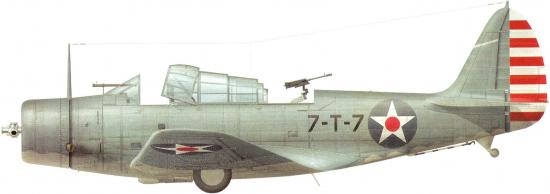 Douglas TBD-1 - Squadron VT-7 - USS Wasp, Scapa Flow.
Douglas TBD-1 - Squadron VT-7 - USS Wasp, Scapa Flow.
Mars 1942 - March 1942
© Dekker Art Work - Thierry Dekker (http://dekkerartwork.over-blog.com/)
• USS HORNET
Le Squadron VT-8 rejoint le USS Hornet en octobre 1941. Il participera à la Bataille de Midway donc aucun TBD ne reviendra (juin 1942).
The Squadron VT-8 joins the USS Hornet in October 1941. It participates to the Battle of Midway during which no TBD will come back (June 1942).
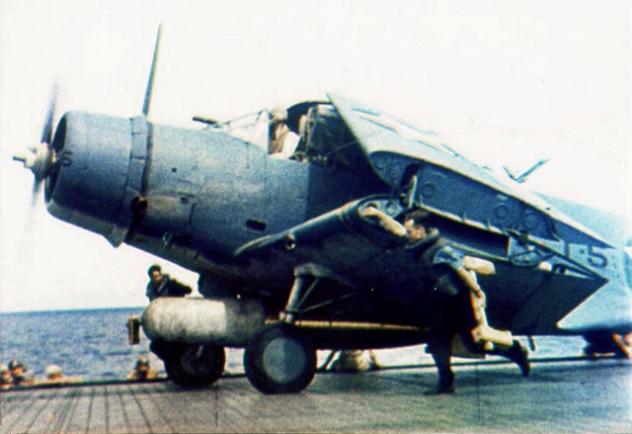 Douglas TBD-1 "T-5" - Squadron VT-8 - USS Hornet, 15/05/1942.
Douglas TBD-1 "T-5" - Squadron VT-8 - USS Hornet, 15/05/1942.
© US Navy (domaine public - public domain)
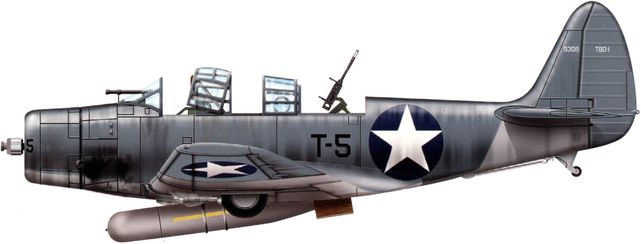
Douglas TBD-1 (BuNo 0308) - Squadron VT-8 - USS Hornett
Un des 15 TBD perdus le 4 juin 1942.
One of the 15 TBDs lost on 4th June,1942
© Andrew Probert - http://probertdesigns.com
• USS RANGER
Le Squadron VS-42 (Scouting), du groupe aérien du Ranger, reçoit trois TBD-1 de janvier à octobre 1941. Après Pearl Harbor, il devient VT-4 ce qui nécessite la modification du Ranger à Norfolk pour pouvoir stocker des torpilles. Le 17 décembre 1941, le VT-4 ne dispose que d'un seul Devastator (BuNo 0306). Le VT-4 sera ensuite doté d'Avenger et de huit ou neuf Devastator au printemps 1942 et opérera dans l'Atlantique Nord. Les Devastator n'effectueront aucun combat et seront remplacés le 27 août 1942 par des Avenger.
The Squadron VS-42 (Scouting), of the aerial group of the Ranger, receives three TBD-1 from January to October 1941. After Pearl Harbor, it becomes VT-4 which requires the modification of the Ranger in Norfolk to be able to store torpedoes. On December 17th, 1941, the VT-4 has only one Devastator (BuNo 0306). The VT-4 is then equipped with Avengers and eight or nine Devastators in spring 1942 and operates in the Northern Atlantic Ocean. The Devastators do not particpate to any combat and are replaced on August 27th, 1942 by Avengers.
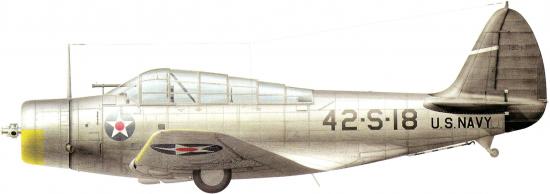
Douglas TBD-1 BuNo 1509 - Squadron VS-42 - USS Ranger, Guantanamo (Cuba), 1941.
© Dekker Art Work - Thierry Dekker (http://dekkerartwork.over-blog.com/)
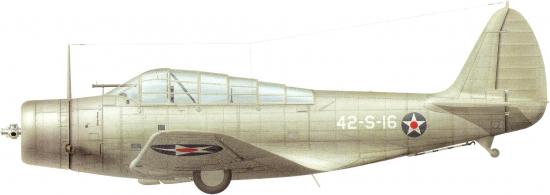
Douglas TBD-1 - Squadron VS-42 - USS Ranger, NAS Norfolk (Viriginia), 1941.
© Dekker Art Work - Thierry Dekker (http://dekkerartwork.over-blog.com/)
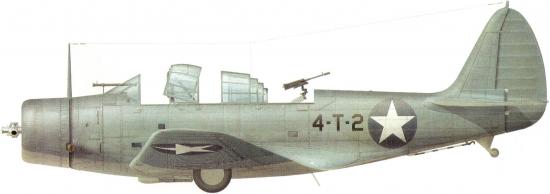
© Dekker Art Work - Thierry Dekker (http://dekkerartwork.over-blog.com/)
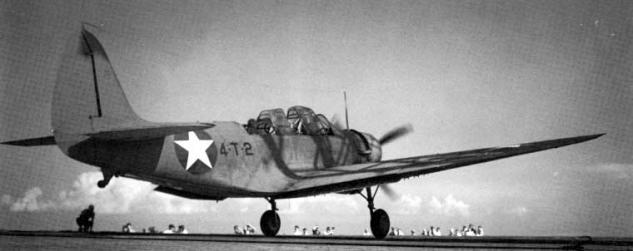 © US National Archives - www.archives.gov
© US National Archives - www.archives.gov
Douglas TBD-1 - Squadron VT-4 - USS Ranger, 1942.
• LES UNITES UTILISATRICES - OPERATING UNITS
• United States Navy
- VT-2 : 58 Devastators (12/37 - 05/42) - VT-3 : 71 Devastators (10/37 - 06/42).
- VT-4 : 9 Devastators (12/41 - 09/42) - VT-5 : 57 Devastators (02/38 - 06/42).
- VT-6 : 62 Devastators (04/38 - 06/42) - VT-7 : 5 Devastators (01/42 - 07/42).
- VT-8 : 23 Devastators (09/41 - 06/42) - VB-4 : 3 Devastators (12/41 - 01/42).
- VS-42 : 3 Devastators (12/40 - 12/41) - VS-71 : 8 Devastators (12/40 - 06/42).
- VS-72 : 2 Devastators (06/41) - VU-3 : 1 Devastator (01/40 - 05/40).
• United States Marine Corps
- VMS-2 : 1 Devastator, BuNo. 1518, (26/03/41 - 05/06/41),
(prêté par le VT-3 - loaned from VT-3)
Le théâtre du Pacifique - The Pacific theater
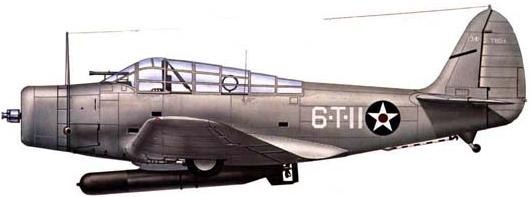 Douglas TBD-1 - Squadron VT-6 - USS Enterprise, 1942.
Douglas TBD-1 - Squadron VT-6 - USS Enterprise, 1942.
(artiste inconnu - artist unknown - source : http://wp.scn.ru)
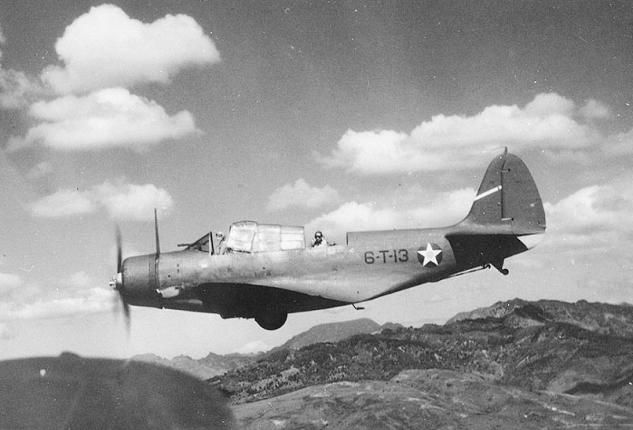 Douglas TBD-1 - VT-6. En vol fin 1941. In flight late 1941.
Douglas TBD-1 - VT-6. En vol fin 1941. In flight late 1941.
© Naval Historical Center - (courtesy of Steve Ewing) - www.history.navy.mil
Au 7 décembre 1941, 100 TDB sont livrés à la Navy dont 69 en service opérationnel avec la flotte. Le 1er février 1942, des TBD du VT-5 et VT-6 attaquent des îles occupées par les Japonais : 9 TBD de l'Enterprise (VT-6), armés de 3 bombes de 500 livres, touchent des navires à l'ancre dans le lagon de Kwajalein (nord des îles Marshall). Ils reviendront se réarmer de torpilles (à 7h25) et repartiront à l'attaque. Trois appareils seront touchés mais deux navires de transport seront détruits, deux sous-marins, un croiseur léger et une canonnière endommagés et deux cargos neutralisés. Les TBD de la VT-5 attaquent le même jour Jaluit (sud des îles Marshall) et touchent un navire de transport, des petites embarcations et des installations portuaires. Mais 2 SBD et 4 TBD-1 seront perdus à cause du mauvais temps ("5-T-6" BuNo 1515 de H.R. Hein, "5-T-7" BuNo 0298 de HT Johnson, "5-T-8" de Jack Moore et "5-T-10" de Max V. Maher). La VT-6 bombarde plus tard le terrain d'aviation de Taroa et détruit des avions au sol, un dépôt de munitions et des bâtiments.
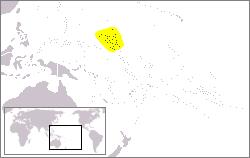
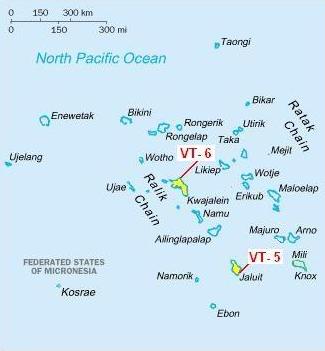
On December 7th, 1941, 100 TDB are delivered to the Navy including 69 in operational service with the fleet. On February 1st, 1942, TBDs of the VT-5 and VT-6 attack islands occupied by the Japanese : 9 TBDs of the Enterprise (VT-6), armed with 3 bombs of 500 pounds, touch ships in the lagoon of Kwajalein (northern Marshall Islands). They return to rearm torpedoes (at 7.25 am) and go back to attack again. Three aircrafts are touched but two transport ships are destroyed, two submarines, a light cruiser and a gunship are damaged and two cargo liners are neutralized. The TBD of the VT-5 attack Jaluit (southern Marshall Islands) the same day and touch a transport ship, small boats and harbor installations. But 2 SBD and 4 TBD-1 are lost because of bad weather conditions ("5-T-6" BuNo 1515 of H.R. Hein, "5-T-7" BuNo 0298 of HT Johnson, "5-T-8" of Jack Moore and "5-T-10" of Max V. Maher). The VT-6 bomb later the airfield of Taroa and destroyed aircrafts on the ground, an ammunition warehouse and different buildings.
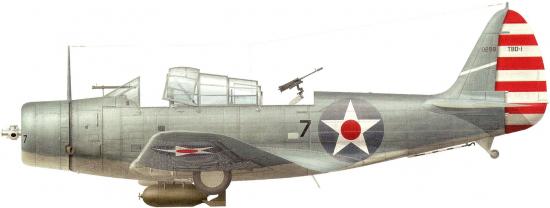 Douglas TBD-1 BuNo 0298 - Squadron VT-5 - USS Yorktown.
Douglas TBD-1 BuNo 0298 - Squadron VT-5 - USS Yorktown.
Pilote Harlan T. "Dub" Johnson, raid sur les îles Marshall, 1er février 1942.
Pilot Harlan T. "Dub" Johnson, raid over Marshall islands, 1st February, 1942.
© Dekker Art Work - Thierry Dekker (http://dekkerartwork.over-blog.com/)
Le 24 février 1942, 9 Devastator de la VT-6 ("6-T-I" à "6-T-9") attaquent l'île de Wake : chaque avion largue ses 12 bombes de 45 kg et 7 des 10 réservoirs de carburant sont endommagés. Tous les avions rentrent au porte-avions. Le 4 mars, c'est au tour de lîle Marcus mais sans les Devastator.
On February 24th, 1942, 9 Devastators of the VT-6 ("6-T-I" to "6-T-9") attacks Wake island : each aircraft drops its 12 bombs of 45 kg and 7 of the 10 fuel tanks are damaged. All the aircrafts return to the aircraft-carrier. On March 4th, it is the turn of Marcus Island but without Devastators.
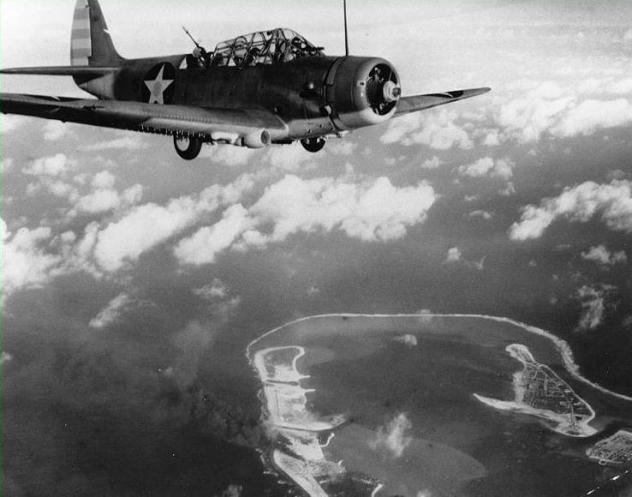 Douglas TBD-1 - VT-6 - 24/02/1942.
Douglas TBD-1 - VT-6 - 24/02/1942.
En vol lors du raid au-dessus de l'île de Wake. Flying over Wake island during the raid.
© Naval Historical Center - (US Navy) - www.history.navy.mil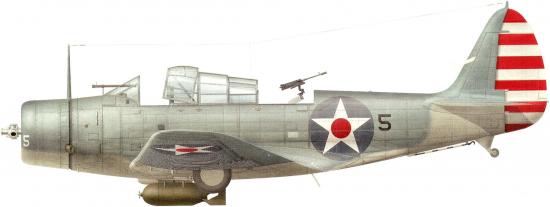 Douglas TBD-1 BuNo 0368 - Squadron VT-6 - USS Enterprise.
Douglas TBD-1 BuNo 0368 - Squadron VT-6 - USS Enterprise.
Pilote James P. Gray, raid sur l'île de Wake, 24 février 1942.
Pilot James P. Gray, raid over Wake island, 24th February, 1942.
© Dekker Art Work - Thierry Dekker (http://dekkerartwork.over-blog.com/)
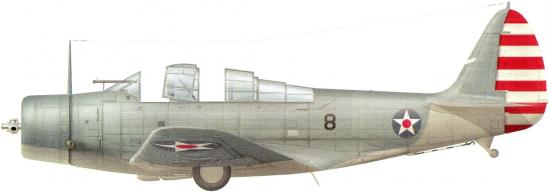
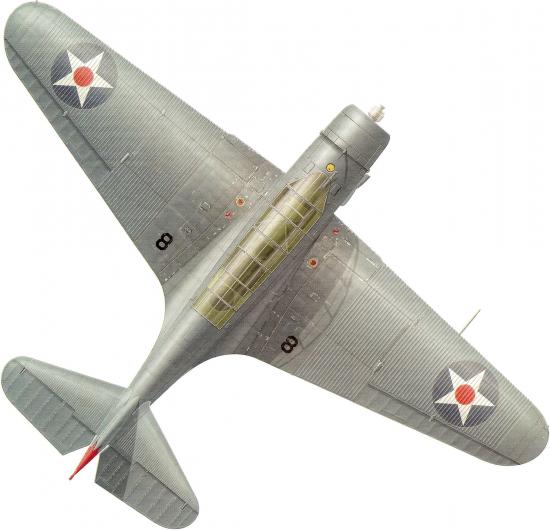
Douglas TBD-1 - Squadron VT-6 - USS Enterprise.
Raid sur l'île de Wake, 24 février 1942.
Raid over Wake island, 24th February, 1942.
© Dekker Art Work - Thierry Dekker (http://dekkerartwork.over-blog.com/)
Fin février, l'amiral Nimitz ordonne à Fletcher (USS Yorktown) de se joindre au USS Lexington pour attaquer Rabaul. Mais suite à une reconnaissance aérienne (de nombreux navires de guerre et de transport sont repérés dans le golfe de Huon à Lae et Salamaua, en Papouasie-Nouvelle-Guinée), l'objectif change le 8 mars. Le 10 mars, les VT-2 (13 TBD avec torpilles commandés par James H. Brett) et VT-5 (12 TBD avec 2 bombes de 225 kg commandés par Joe Taylor) attaquent ces navires : le VT-2 coule le transport Yokohama maru. Un hydravion Nakajima E8N2 est abattu par les Wildcat d'escorte. Le VT-5 coule trois transports et endommage un transport et le transport d'hydravions Kiyokawa maru. Les avions retourneront aux porte-avions.
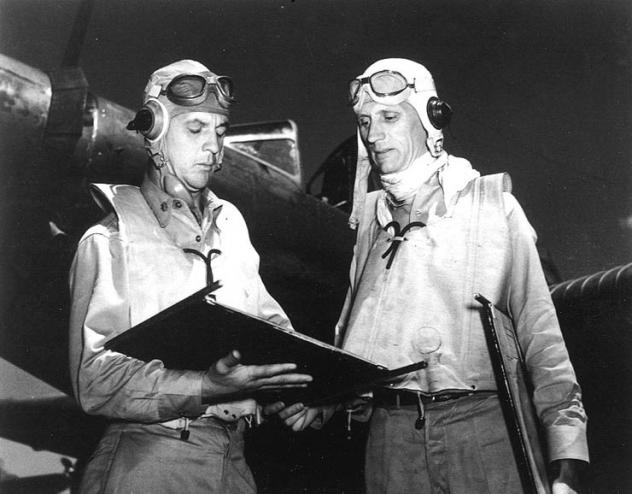 Lt. Cdr. Joe Taylor (à gauche) - Lt. Cdr. William O. Burch Jr. (à droite).
Lt. Cdr. Joe Taylor (à gauche) - Lt. Cdr. William O. Burch Jr. (à droite).
Lt. Cdr. Joe Taylor (on left) - Lt. Cdr. William O. Burch Jr. (on right).
(06/06/1942 - Naval Air Station - Ford Island, Pearl Harbor, Hawaï)
© US National Archives - www.archives.gov
At the end of February, the admiral Nimitz orders Fletcher (USS Yorktown) to join the USS Lexington to attack Rabaul. But after an air reconnaissance (many transport and warships are located in Huon Gulf at Lae and Salamaua, New Guinea), the target changes on March 8th. On March 10th, the VT-2 (13 TBDs with torpedoes leaded by James H. Brett) and the VT-5 (12 TBDs with 2 bombs of 225 kg, leaded by Joe Taylor) attack these ships : the VT-2 sink the transport ship Yokohama maru. A Nakajima E8N2 seaplane is shot down by escort Wildcats. The VT-5 sink three transport ships and damage one transport ship and the seaplane transport Kiyokawa maru. All the aircrafts return to the aircraft-carriers.
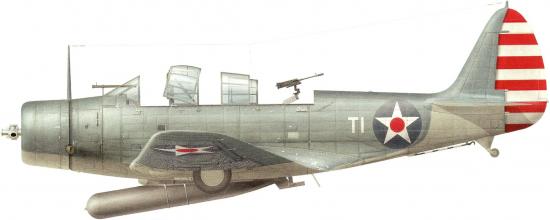 Douglas TBD-1 - Squadron VT-2 - USS Lexington.
Douglas TBD-1 - Squadron VT-2 - USS Lexington.
Pilote James H. Brett (commandant de l'unité), attaque du Golfe de Huon, 10 mars 1942.
Pilot James H. Brett (unit commander), attack over the Gulf of Huon, 10th March, 1942.
© Dekker Art Work - Thierry Dekker (http://dekkerartwork.over-blog.com/)
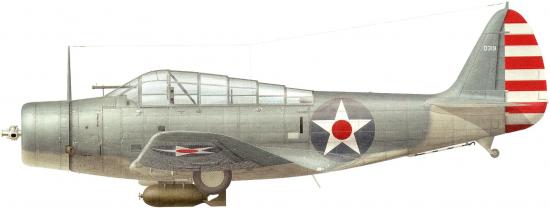
Douglas TBD-1 BuNo 0319 - Squadron VT-5 - USS Yorktown.
Pilote Joe Taylor (commandant de l'unité), attaque du Golfe de Huon, 10 mars 1942.
Pilot Joe Taylor (unit commander), attack over the Gulf of Huon, 10th March, 1942.
© Dekker Art Work - Thierry Dekker (http://dekkerartwork.over-blog.com/)

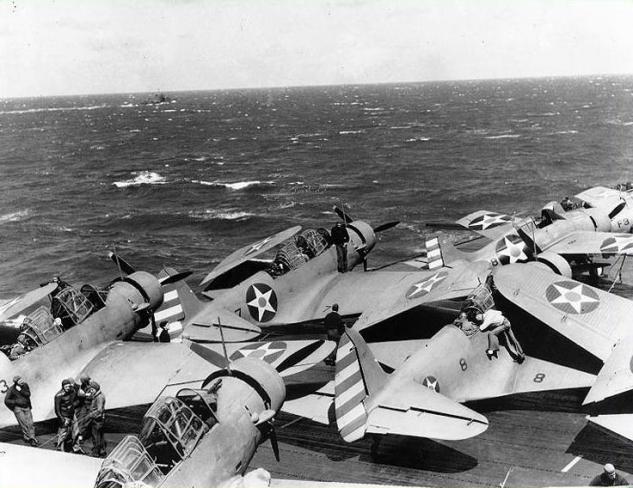 Douglas TBD-1 - VT-6 - USS Enterprise - Avril 1942 - April 1942.
Douglas TBD-1 - VT-6 - USS Enterprise - Avril 1942 - April 1942.
(Grumman F4F-3 "Wildcat" dans le fond - Grumman F4F-3 "Wildcat" in the background).
© US National Archives - www.archives.gov
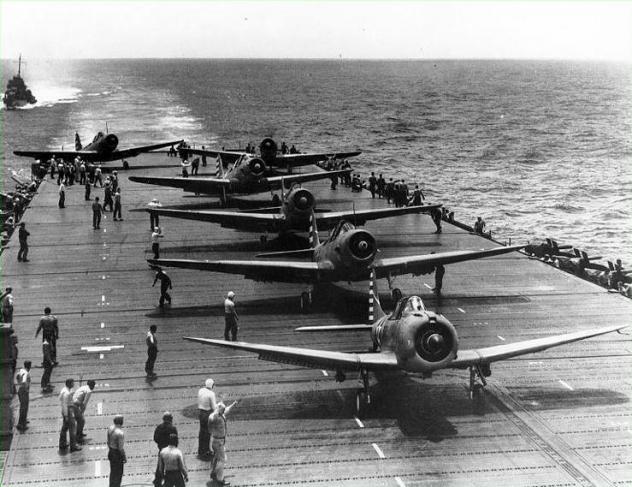 Douglas TBD-1 - VT-6 - USS Enterprise - Mai 1942 - May, 1942.
Douglas TBD-1 - VT-6 - USS Enterprise - Mai 1942 - May, 1942.
(SBD "Dauntless" en n°1 au décollage - SBD "Dauntless" n°1 for take-off).
© US National Archives - www.archives.gov
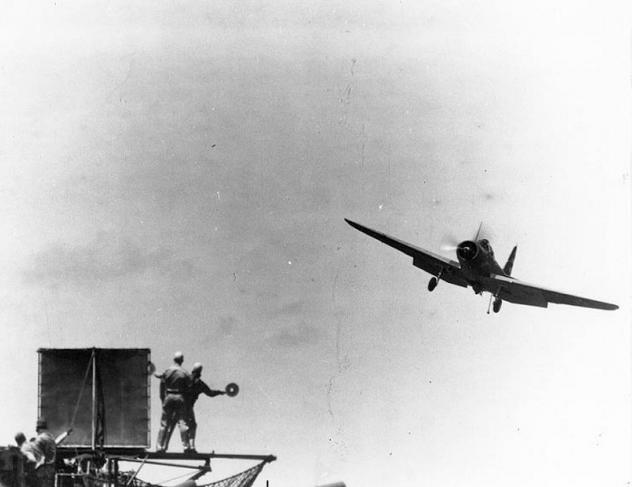 Douglas TBD-1 - VT-6 - USS Enterprise - 4 mai 1942 - 4th May, 1942.
Douglas TBD-1 - VT-6 - USS Enterprise - 4 mai 1942 - 4th May, 1942.
© US National Archives - www.archives.gov

